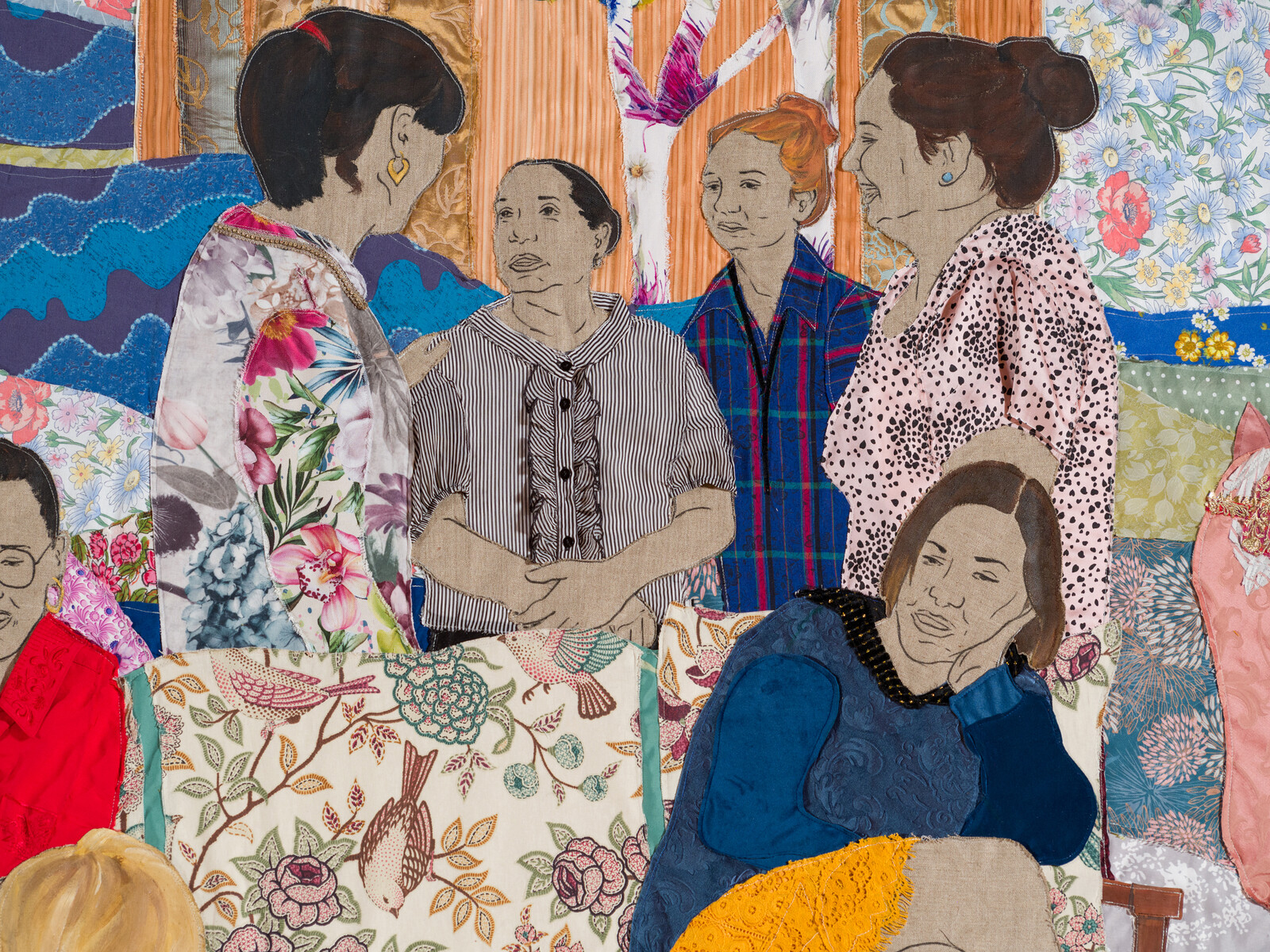Sawore, Sawore, Sawore (Everything, everything, everything)
May 9–June 30, 2025
Parc du Cinquantenaire 10
1000 Brussels
Belgium
The Royal Museums of Art and History in Brussels will showcase a monumental intervension of one of the most renowned contemporary Polish-Roma artists, Małgorzata Mirga-Tas. The impressive-sized textile work will replace one of the 16th-century tapestries from the Museum’s permanent collection. Present, yet marginalised in the original works, Romani women and children in Mirga-Tas’s work will become the main heroines of the story. The artist once again engages in a critical dialogue with art history, restoring the voice of groups previously overlooked or excluded from the European canon.
The curator of the intervention Sawore, Sawore, Sawore (Everything, everything, everything) is Wojciech Szymański, and it is co-organised by the Adam Mickiewicz Institute as part of international cultural programme of the Polish Presidency of the Council of the European Union 2025.
Present but invisible in European art history
Małgorzata Mirga-Tas’s intervention at the Brussels museum will enter into dialogue with the museum’s permanent exhibition, which consists of eight of the ten tapestries from the series titled The Story of Jacob. The series, designed by Bernard van Orley and made in the workshop of Willem de Kempeneer in the 16th century, is one of the most important examples of 16th-century Brussels tapestry art. It is a masterpiece of the genre. It is also a rare example of a work of ancient art at which Romani women and children were employed as models. Their numerous portraits found their way to the majority of the tapestries making up the series, but they play a secondary role there, constituting an orientalist display intended to arouse the curiosity of recipients.
Małgorzata Mirga-Tas’s impressive work—measuring 425 cm by 600 cm—will temporarily replace one of the eight original elements of The Story of Jacob, reproducing the traditional structure of the 16th-century tapestry and its main scene. She will introduce Romani motifs and images of Romani models with children used in the original tapestries, but this time they will become the central figures of the story. In this way, she will reclaim their images and give them a proactive role, rewriting the narrative of the “Story of Jacob” series and shifting the focus from non-Romani creators and collectors to those who have been ignored so far.
Dialogue between the past and the present
In this way, the artist once again engages in a critical dialogue with art history, asking about the place of Romani people in its canon and the mechanisms of exclusion present in the institutional narrative of museums. By intertwining contemporary Romani portraits taken from the personal photographic archive of the artist and her family with historical images, Mirga-Tas will create a dynamic dialogue between the past and the present. The biblical narrative of “The Story of Jacob” will thus be brought into a contemporary context and will offer a critical perspective on contemporary migration and minority policies in the European Union
Małgorzata Mirga-Tas has often used works of ancient art as a point of reference in her work. Her solo exhibition Out of Egypt (2021), presented at the Arsenał Gallery in Białystok, was inspired by the seventeenth-century engravings of Jacques Callot. In turn, in the exhibition Enchanting the World at the Polish Pavilion during the 59th Venice Biennale (2022), she invoked the works of Callot and the 15th-century frescos from the Palazzo Schifanoia in Ferrara. The artist’s accomplishments also include a similar intervention during the exhibition Camere con vista. Aby Warburg, Firenze and the imaginary laboratory (2023) at the Uffizi Gallery in Florence, where she created a tapestry alluding to the Adoration of the Magi by Gentile da Fabriano—a painting found in the Uffizi Florentine collection. Her interventions in the art of the past are not only a simple reaching for ancient iconography and reusing it. She consistently places representatives of the Romani community, erased from official museum narratives, at the centre of her works.
Detailed information about the entire international cultural programme of the Polish Presidency can be found at poland2025eu.culture.pl.
